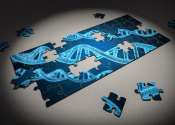3-D human epidermal equivalent created using math
Scientists have successfully constructed a three-dimensional human epidermis based on predictions made by their mathematical model of epidermal homeostasis, providing a new tool for basic research and drug development.
Jan 25, 2019
0
70









